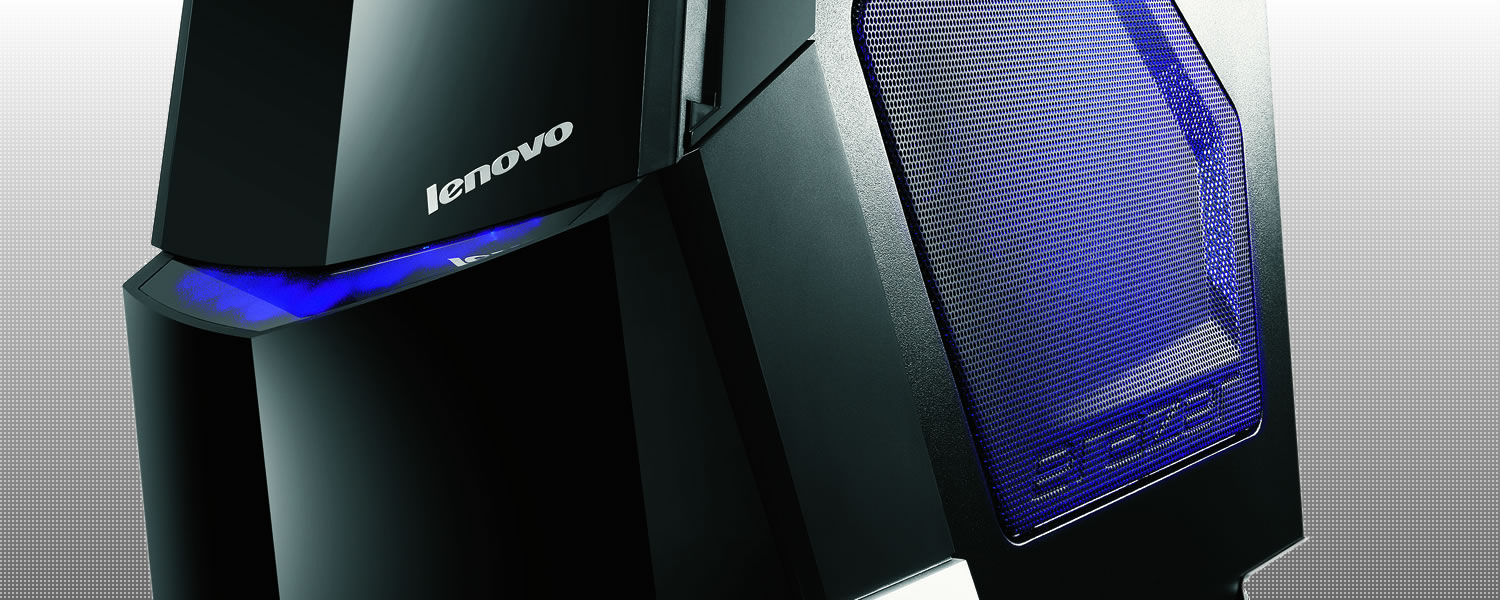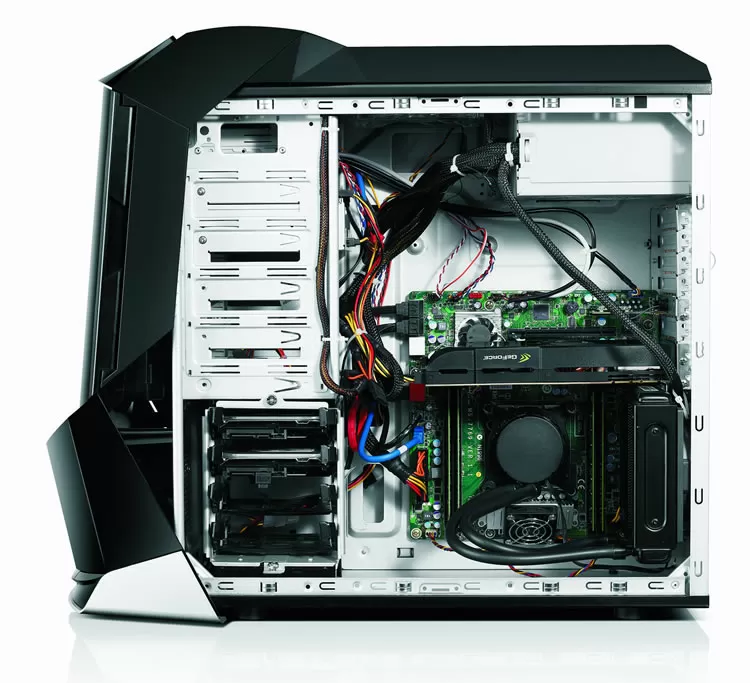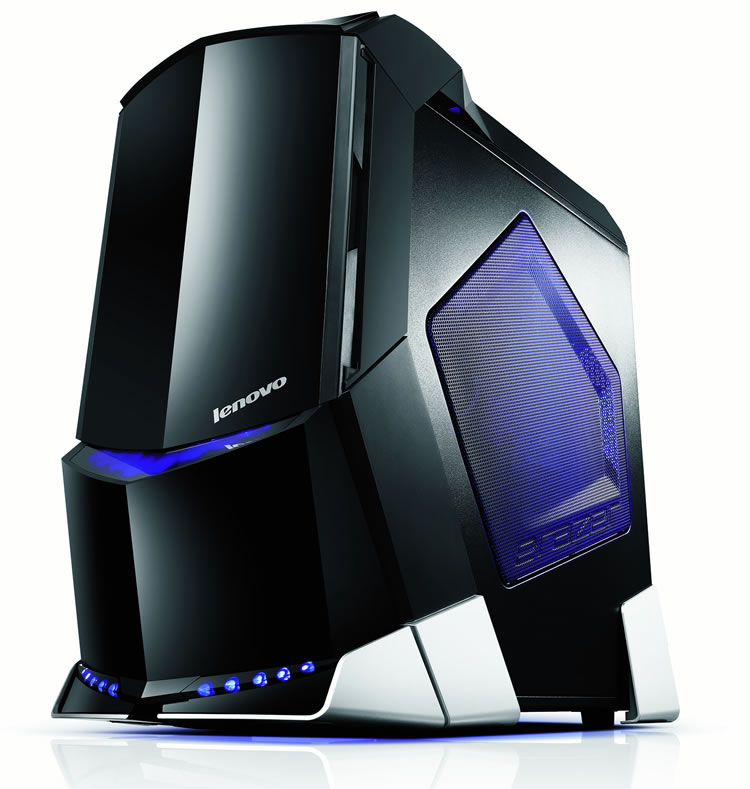As the globe's largest PC maker, Lenovo is well-known for its diverse portfolio of offerings spanning home and business. Gaming, on the other hand, is one area Lenovo has mostly ignored over the years. With that in mind, we introduce to you the Erazer X700 – Lenovo's first stab at a PC tailored for gamers.
Features which qualify the X700 as a full-fledged gaming PC are its unique exterior, performance-centered parts, ample tool-free expandability, liquid cooling and OneKey overclocking. Sound good so far?
Our review unit houses an Intel Core i7-3820, Geforce GTX 660, 12GB RAM and a 1TB HDD and a 128GB Samsung SSD. This is actually the same model available at Best Buy for $1699. It's worth noting though that we continue to see the non-SSD version for a promotional price of $1290 directly from Lenovo.
Although the starting price is $1699, it's possible to spend more. The highest-end configuration sports a decidedly non-mainstream $3,999 price tag ($2,999 promo price), but boasts a beefy Intel Core i7-3970X, dual Radeon HD 8950 graphics, 32GB of RAM, 128GB SSD and a 2TB HDD. With a GTX 660 and Radeon HD 8950 being the only GPU options though, extreme gamers will likely sneer at Lenovo's tagline of "extreme-performance gaming desktop". For gamers on a budget though, the GTX 660 is a capable if aging card even if it is a few rungs below top tier.
Aesthetics, First Impressions, Build Quality
The first detail to grab my attention was the goofy "Engine Start" power button. Innocuous as it may be, I need to get this off my chest: tacky car-computer analogues like these are, in my opinion, cringe-worthy. In the future, I hope Lenovo forgoes silly contrivances like these and chooses to keep it classy.
The Erazer X700 touts a "helmet inspired" exterior full of sharp lines and high-gloss black plastic further accented by blue lighting and silver gray elements. The resulting aesthetic is somewhat futuristic, sleek and easily more impressive than standard PC offerings. Simultaneously, the X700 also manages to "play it safe" by not straying too far from conventional design: It's different, but not dangerously adventurous; it's modern, but not impractical; it's fun, but not too outlandish. Whether or not the look appeals to you though will be strictly up to you, but I think the Erazer's target audience majority will be pleased.
Lenovo Erazer X700 Gaming Desktop - $1,699
- Intel Core i7-3820
(3.6GHz, quad-core Sandy Bridge-E) - Lenovo X79 motherboard
(micro-ATX, LGA 2011) - CPU Liquid Cooling
- 12GB DDR3 RAM
- MSI GeForce GTX 660 (1.5GB)
- 128GB Samsung SSD
- 1TB Seagate Barracuda 7200RPM HDD
- Lenovo LED-backlit gaming keyboard
- Lenovo L251G 9-button LED-lit gaming mouse
- Ports (rear): 2 x DVI-D, 1 x HDMI, 1 x DisplayPort, 6 x USB 2.0, 2 x USB 3.0, 1 x Gigabit LAN, CS-out, RS-out, SS-out, line-in, line-out, mic-in, 1 x optical S/PDIF out, 1 x coaxial S/PDIF out
- Ports (front): 1 x USB 3.0, 1 x USB 2.0, mic-in, line-out (headphones)
- Windows 8 Professional x64
- 24.01 x 10.62 x 20.86 inches
- 62 pounds
The 62-pound, 45-liter X700 is much larger than your average Lenovo PC, measuring nearly 21-inches tall, 10.6-inches wide and two-feet long. Evidence of its size was betrayed by the enormous carton it shipped in. Its above-average stature affords owners ample room for expansion, but stops it short of becoming an unwieldy monstrosity. The chassis' generous volume is primarily useful for extra storage options, but a second (or longer) video card and even a custom cooler are all possible here.
The front drive bays are concealed behind a sturdy-enough plastic door which utilizes magnetic science-magic to remain shut. Behind the door lies a 29-in-1 card reader, standard-issue DVD burner, two removable 3.5" drive bays plus two additional 5.25" expansion bays.
The case's side panel is easily removed with two thumb screws; however, re-attaching the side was a little more fussy than I care for. The edge of the panel needs to be angled and aligned near-perfectly to slip back on, but once you've figured it out, it's an easy enough trick to replicate.
The case is essentially SECC steel wrapped by plastic, but it feels plenty sturdy. I don't believe anything here is in danger of wearing out of breaking several months down the road, but just to nitpick, the gray plastic in the corners is easily scuffed.
Inside the Erazer X700
Internally speaking, the Erazer X700 is more ordinary than extraordinary. The systems' innards are a kind of sturdy exercise in dull-gray, rolled-steel pragmatism. After diving in, it becomes self-evident that the X700 is an above-average mass-produced desktop, but not the kind of spare-no-expense machines you might expect from boutique PC outlets like Maingear.
The mesh side-opening doesn't offer a clear view, but peering inside reveals few signs fancy: no bright, coordinated colors or high-end flair. The cables are managed, but not impressively so. The removable drive bay inserts (two in front) feel adequate, but fall short of the satisfyingly solid heft you'll encounter on the highest-end systems and cases. There is a bit of blue LED lighting, but the effect is subtly visible: just enough to hint this is a wall-jumping, reaper-shooting, flag-capturing gaming rig as opposed to your momma's Farmville machine. Additionally, there are a few sharp edges in there too – an unusual thing to find on high-end cases.
Succinctly put, the X700's innards show it is clearly not a "no-compromise" gaming PC. At $1699 though, we should expect some compromise.
Upgrades and Expansion
Lenovo doesn't offer built-to-order Erazer configs, but the company does tout "expandability" as a selling point. Despite a lack of internal whimsy, functionally speaking, the X700's bowels are roomy and easy to work within. The chassis sports an effectively toolless design and four directly accessible 3.5" drive bays in addition to the two removable ones in the front. One thing is for certain: X700 owners will never want for more storage options.
The chassis appears capable of accommodating a graphics card longer than 12-inches, but with one caveat: such an addition will require use of the bottom-front 5.25-inch drive bays. If you're content with a single optical drive, this won't be a problem.
The X700 is equipped with the watts, slots and space necessary for the addition of a second GTX 660. For about $1490 ($1290 promo + another GTX 660) and a little elbow grease, a formidable gaming rig can be had if you can forgo the SSD. Note that SLI users will have to toss out the Wi-Fi card occupying the second PCI-e slot.
In addition to storage options, X700 owners will likely never want for memory options either – the X700's RAM is upgradeable to 32GB of DDR3. With four DIMMs and only three taken, there's still one slot yearning to be filled.
Despite its spaciousness (and enough standoffs for a regular ATX board), our Erazer X700 shipped with a micro-ATX motherboard. Packed with an X79 northbridge, 4 x DIMMs and 8 x SATA ports though, this board really only falls short on PCI-e slots: there are only two. Unfortunately, this precludes owners from mixing three or more cards, such as SLI/Crossfire graphics with Wi-Fi, professional audio, PCI-e storage options and so on. Even so though, two slots will meet the needs and wants of most.
Yes, Intel's X79 is an aging chipset (nearly two years old). However, the X79 still has more PCI-e lanes and better bandwidth than other Intel options. This seems like a choice driven more by performance than bottom line, seeing as the X79 still doesn't come cheap after all these years.
Lenovo's motherboard hosts an LGA 2011 socket capable of supporting Ivy Bridge E and Intel's "Extreme" varieties of Core i7 CPUs. Disappointingly, there are no signs of Haswell coming to this platform. For desktops, the only flavor of Haswell so far is LGA 1150 while future chips may skip directly to LGA 2011-3. This likely limits prospective future CPU upgrades to Ivy Bridge-E.
Thankfully, the chassis is fairly standard, avoiding proprietary design elements (aside from the "Overclock" button). This means when the X700 has outlived its usefulness, it can be gutted and retrofitted with new innards... assuming you like the case, of course.







